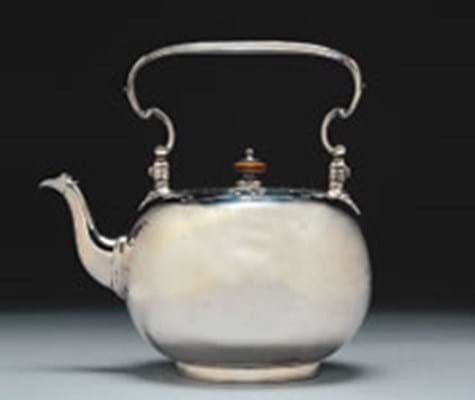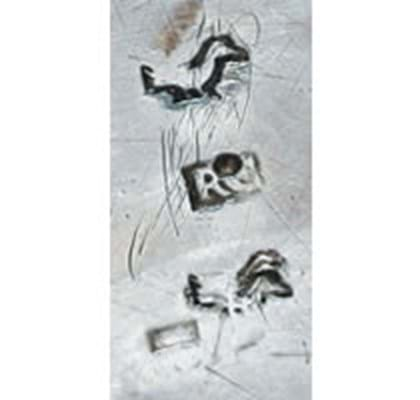The heavy 57oz kettle (missing its stand) carried the marks RC with a bird. In 1921 these assays were recorded in Sir Charles Jackson's Silver & Gold Marks alongside other London makers whose names had not been not traced.
However, David Barker, writing in Ian Pickford's 1989 revision of that great work, has suggested that the bird is a crow and a play on the name of Croker, who is recorded as a silversmith and cutler in Guildford from 1729 to 1775. By the middle of the 18th century there were at least five working silversmiths in the Surrey town although no recognised body of work survives.
But, while it represented a significant find for the 'picker' who bought it recently at a Canadian house sale, rarity did not translate into a huge price tag. Although it comfortably exceeded its modest Can$3500-5000 estimate, the English trade backed off at Can$13,000 (£5900) at which point it sold to a Canadian collector. The absence of the stand was a problem but it also appears that - even in the provincial silver market - an object can be too esoteric.
If that bird didn't fly then a Worcester saucer certainly did. Measuring 5in (13cm) diameter this little gem from c.1752-54 painted in underglaze blue in the High Island pattern with workman's marks to the base underlined the demand for the earliest English porcelain when it skipped nominal hopes of Can$200-300 to bring Can$5600 (£2550)
£1 = Can$2.20
Rare bird fails to fly in Toronto
It would be amiss not to record the fortunes of the rare George II provincial silver tea kettle that, as reported in ATG no.1663, dated November 6 had been consigned for sale at Toronto fine art auctioneers Waddingtons (15% buyer’s premium) on December 6.








